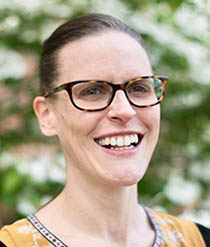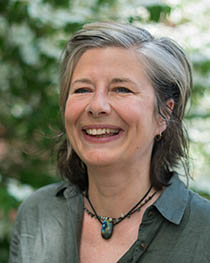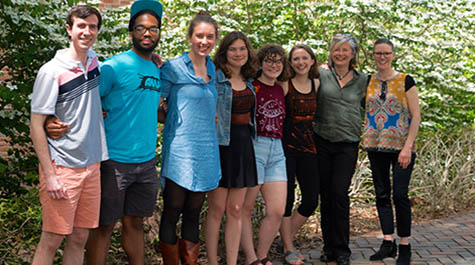New interdisciplinary course explores ecotherapy with experimental documentary
Backpacking, biking, soil-touching, meditating on nature, standing in a garden in the rain: The list of simple acts deemed to help restore essential balance among body, mind and environment is long. It may get one item longer, according to Dorothy Ibes and Tanya Stadelmann, two William & Mary researchers who co-taught the class Communicating Environmental Science with Documentary Film for the first time this spring.
While teaching the course, Ibes, senior lecturer of environmental science and policy at the university, noticed that the simple act of filming nature is therapeutic. This is because filmmakers are "in nature, being mindful," she said. "They have to be really looking, paying attention, then they have to be silent and still as they try to capture nature images and sounds."
{{youtube:medium|RQienY9AfK8}}
Based on scholarly literature, Ibes knew that physical immersion in the natural world would trigger positive physiological benefits, but she was surprised how shooting footage amplified this benefit. Watching students film during a class outing to York River State Park, she observed that they seemed to "get in tune with nature's rhythms."
 The instructors also noticed the impact of final film projects on the viewer. "After I watched some of these films, I found myself feeling more relaxed, more centered, more focused," Ibes said. "I was surprised. It dawned on me, that is ecotherapy."
The instructors also noticed the impact of final film projects on the viewer. "After I watched some of these films, I found myself feeling more relaxed, more centered, more focused," Ibes said. "I was surprised. It dawned on me, that is ecotherapy."

Tanya Stadelmann, lecturer in film and media studies, was less surprised. As a filmmaker and media artist, she has worked collaboratively with writers, musicians, designers and performers with a recent focus on bringing chemistry, sociology and other social sciences into ecologically-focused documentaries. Response to some of the resulting projects has convinced her the works can engage viewers on multiple levels, including that of offering a “deep, experiential moment in nature.”
ECOTHERAPY
"I define ecotherapy as healing and growth fostered by interaction with the natural environment, natural objects or representations of nature (images, nature art, biophilic design).
"There are various modalities for realizing these benefits, from backpacking, spending time with animals, gardening or integrating plants, fountains and natural features into home or work environments. Visualization of natural settings or meditating on nature metaphors also are effective ways to practice ecotherapy.
"Finally, a critical aspect of ecotherapy is the reciprocal relationship between humans and the natural world."
—Dorothy Ibes
The two came together as part of the W. Taylor Reveley Interdisciplinary Faculty Fellowships, which are supported by the Andrew W. Mellon Foundation. The fellowships are designed to stimulate intellectual creativity across academic departments by facilitating faculty commitment to interdisciplinary teaching and research. In their course, students are learning to communicate the science of ecotherapy using two modes of documentary filmmaking; expository and experimental.
“The opportunity this fellowship has opened up is immense,” Ibes said. “For the students, it’s very experimental. It allows us room to be innovative. Out of that come projects that are very creative.”
Stadelmann concurs. “The films are pushing the integration of science and the emotional perspectives,” she said. “The students are challenged but they are doing amazing things.”
Thomas Roche '18, a veteran of several video-related production courses at W&M, found the production side of the assignments fairly routine. “The hardest part is not only grasping the meaning of what ecotherapy is, not just in general but for you as a person.”
“The videos are not just images of trees and nature, of people reconnecting with themselves, but there are multiple decisions that go into that,” he said.
Sarah Ruiz '18 had problems during her initial video shoots with the aspect ratios of the images she captured. The potential problem inspired her to produce multiple layers of video by projecting her footage on a wall. “I created a theme of memories in nature,” she said. “It mimics the way memories seem to step on top of each other. It represents ecotherapy through memories.”
Ultimately the fellowship will create a dynamic website featuring a documentary film about ecotherapy that Ibes and Stadelmann are producing. The website will provide links to ecotherapy science articles, photos and videos to represent a nuanced view of the evolving field. Included will be some of the student work being produced for the class.
"I feel like we discovered a new modality of ecotherapy that didn't exist before," Ibes said. "You have animal-assisted therapy, you have wilderness therapy, you have horticultural therapy. To me, this is like video ecotherapy."
Preview the emerging video work on the class YouTube website.















